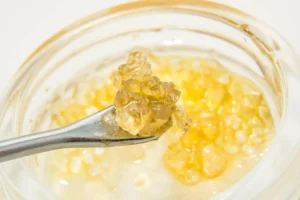In today’s world, sustainability is not just a buzzword; it’s a way of life. With increasing awareness of environmental issues and the urgent need for eco-friendly solutions, individuals and industries alike are seeking alternatives to reduce their carbon footprint. One such innovation gaining traction is the use of hemp in manufacturing water bottles. In this article, we delve into the significance of hemp water bottles in the realm of eco-friendly living and explore how they are shaping a more sustainable future.
The Problem with Plastic
One of the most important environmental issues of our day is plastic pollution. Single-use plastic bottles, in particular, contribute significantly to the proliferation of plastic waste in oceans, rivers, and landfills worldwide. Despite efforts to recycle, a large percentage of plastic bottles still end up polluting the environment, posing grave threats to marine life and ecosystems. As consumers become increasingly aware of these issues, there is a growing demand for alternatives that are both sustainable and practical.
Enter Hemp: A Versatile Solution
Hemp, a variety of the Cannabis sativa plant, is garnering attention for its versatility and eco-friendly properties. Unlike traditional plastics derived from fossil fuels, hemp-based plastics are biodegradable and renewable, making them a promising alternative for reducing plastic waste. Hemp fibers, in particular, possess remarkable strength and durability, making them ideal for use in various applications, including water bottles.
The Benefits of Hemp Water Bottles
The rise of hemp water bottles represents a paradigm shift in the way we approach packaging and sustainability. These innovative bottles offer a multitude of benefits that extend beyond their eco-friendly credentials. Firstly, hemp water bottles are lightweight yet sturdy, making them convenient for everyday use. Their durable nature means they can withstand the rigors of daily life, from gym workouts to outdoor adventures, without sacrificing performance or integrity.
Furthermore, hemp water bottles are non-toxic and free from harmful chemicals commonly found in traditional plastics. This makes them a safer and healthier option for both consumers and the environment. Additionally, hemp cultivation requires minimal water and pesticides compared to other crops, further reducing its environmental impact. By choosing hemp water bottles, consumers can feel confident knowing they are making a positive contribution to sustainability without compromising on quality or convenience.
Challenges and Opportunities
While the potential of hemp water bottles is vast, there are still challenges to overcome in mainstream adoption. One such challenge is scalability; although hemp cultivation is on the rise, it still lags behind other crops in terms of production volume. Additionally, regulatory barriers and misconceptions surrounding hemp’s association with marijuana remain obstacles to widespread acceptance.
However, these challenges also present opportunities for innovation and growth within the hemp industry. As demand for sustainable alternatives continues to rise, there is a growing incentive for investment in hemp cultivation and processing infrastructure. Moreover, education and advocacy efforts can help dispel myths and promote the benefits of hemp-based products, paving the way for greater acceptance and adoption.
The Role of Consumers
Ultimately, the success of hemp water bottles—and sustainable products in general—depends on consumer awareness and choice. By choosing to support brands that prioritize sustainability and opting for hemp-based alternatives, consumers can drive positive change and encourage further innovation in the industry. Additionally, advocating for policies that support sustainable practices and reduce reliance on single-use plastics can amplify these efforts at a systemic level.
Final Thoughts:
Hemp water bottles represent a significant step forward in the quest for sustainable solutions to plastic pollution. As awareness of environmental issues continues to grow, the demand for eco-friendly alternatives is only expected to increase. By harnessing the versatility of hemp and embracing innovation, we can create a more sustainable future for generations to come. As individuals, businesses, and policymakers unite in the pursuit of a greener planet, hemp water bottles stand as a symbol of hope and possibility in the fight against plastic pollution.
Reference:
- Adesina, I., Bhowmik, A., Sharma, H., & Shahbazi, A. (2020). A review on the current state of knowledge of growing conditions, agronomic soil health practices and utilities of hemp in the united states. Agriculture, 10(4), 129. https://doi.org/10.3390/agriculture10040129
- Bethurem, M., Choate, B., & Bramwell, S. (2021). Stop piling on: assessing efforts to reduce single-use water bottles at allegheny college. Sustainability, 13(16), 8864. https://doi.org/10.3390/su13168864
- Bruchmann, K., Chue, S., Dillon, K., Lucas, J., Neumann, K., & Parque, C. (2021). Social comparison information influences intentions to reduce single-use plastic water bottle consumption. Frontiers in Psychology, 12. https://doi.org/10.3389/fpsyg.2021.612662
- Kolodinsky, J., Lacasse, H., & Gallagher, K. (2020). Making hemp choices: evidence from vermont. Sustainability, 12(15), 6287. https://doi.org/10.3390/su12156287
- Panoutsou, C., Cossel, M., Ciria, P., Ciria, C., Baraniecki, P., Monti, A., … & Dubois, J. (2022). Social considerations for the cultivation of industrial crops on marginal agricultural land as feedstock for bioeconomy. Biofuels Bioproducts and Biorefining, 16(5), 1319-1341. https://doi.org/10.1002/bbb.2376
- Panthapulakkal, S. and Sain, M. (2006). Injection‐molded short hemp fiber/glass fiber‐reinforced polypropylene hybrid composites—mechanical, water absorption and thermal properties. Journal of Applied Polymer Science, 103(4), 2432-2441. https://doi.org/10.1002/app.25486
- Panthapulakkal, S. and Sain, M. (2007). Studies on the water absorption properties of short hemp—glass fiber hybrid polypropylene composites. Journal of Composite Materials, 41(15), 1871-1883. https://doi.org/10.1177/0021998307069900
- Siddika, A. (2023). Hemp-based electronic textiles for sustainable and wearable applications. Acs Sustainable Chemistry & Engineering, 11(41), 14913-14920. https://doi.org/10.1021/acssuschemeng.3c02579
- Sutherland, D., Rather, A., Sabino, R., Vallabhuneni, S., Wang, W., Popat, K., … & Kota, A. (2023). Hemp-based sustainable slippery surfaces: icephobic and antithrombotic properties. Acs Sustainable Chemistry & Engineering, 11(6), 2397-2403. https://doi.org/10.1021/acssuschemeng.2c06233
- Zhu, Y., Romain, C., & Williams, C. (2016). Sustainable polymers from renewable resources. Nature, 540(7633), 354-362. https://doi.org/10.1038/nature21001





